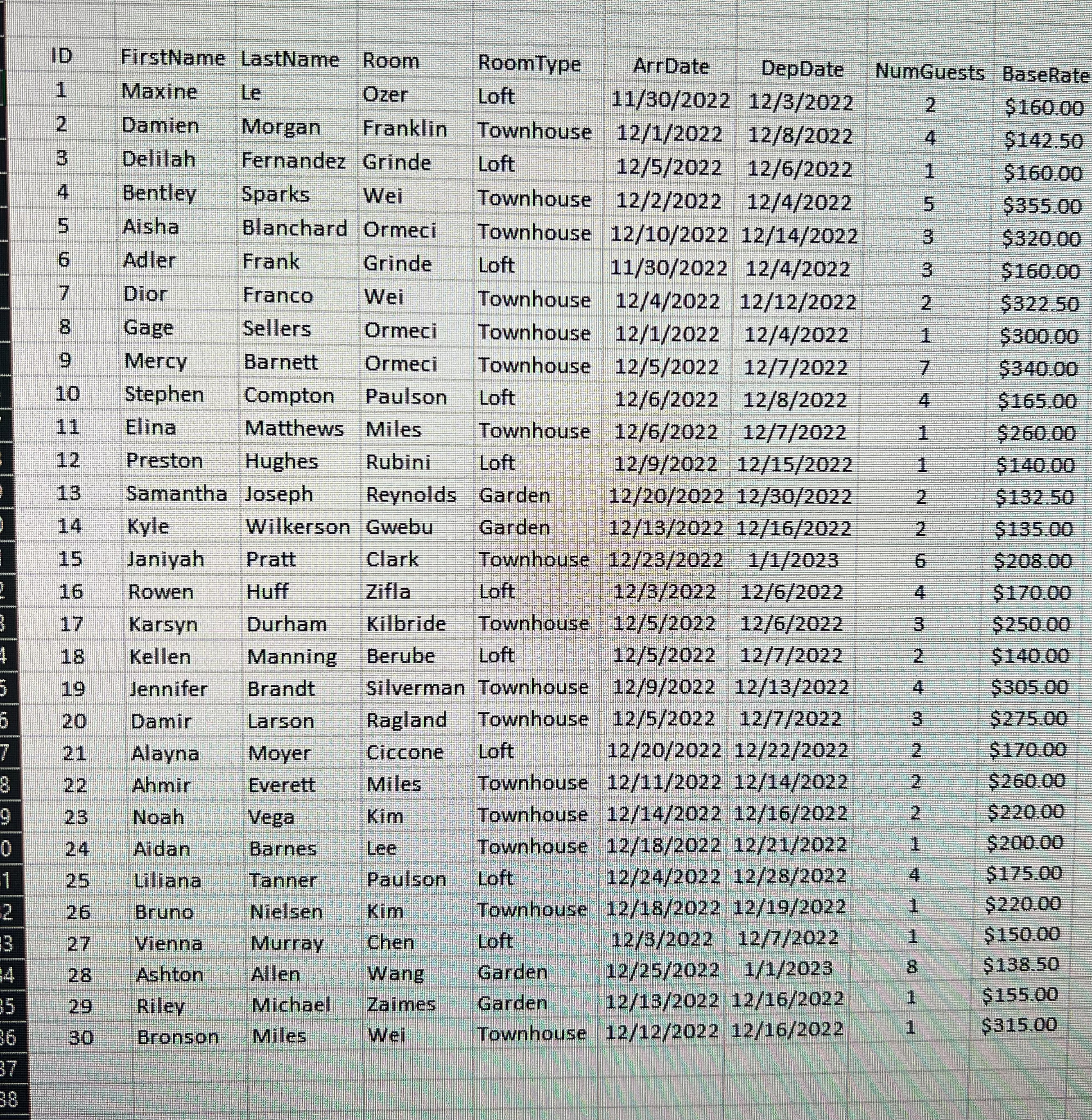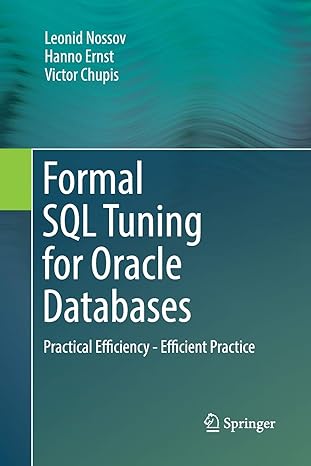Answered step by step
Verified Expert Solution
Question
1 Approved Answer
Problem Text The Excel file provided ( see link on Canvas assignment ) lists customers, rooms they occupied, arrival and departure dates, number of occupants,
Problem Text
The Excel file provided see link on Canvas assignment lists customers, rooms they occupied, arrival and
departure dates, number of occupants, and daily rate for the Durham Inn, a small bedandbreakfast inn, during
one month. Room rates are the same for one or two guests; however, additional guests must pay a surcharge of
$ per person per day this covers additional housekeeping, laundry, and breakfast costs Parties staying for
more than five days receive a discount on the room rate and any guest surcharges. First make a copy of the
data sheet. Then build a model to calculate the revenue from each guest, and the total revenue for the month.
Instructions & Guidelines
Flexible Model: Make the model logic flexible. Store the parameter values eg guest threshold, surcharge
amount, discount threshold, discount percentage in separate cells, and make sure the user can change any
of the values of these value, with the computed results remaining correct. Also, if any of the given data
changes for example, we paste in a different months guest stays the computed results need to update
properly. Break the logic into small chunks use multiple new columns to create the necessary logic. The
rightmost column should be the total revenue for that guest. Write one formula for the top cell in each
column and copy the formula down if your logic doesnt work for all cases, it means your logic is not
correct It is not required, but I encourage you to convert the data to a Table first, and then use structured
ie tablebased formulas in Excel. Doing this forces you to make sure the logic works for every row in the
table. It is best to convert to a Table first before you start writing formulas.
Base Case Check Value: As a check on your work, calculate the total revenue. Using the base case values of
the parameters, the revenue should be $
Confirm flexibility Scenario A: Once you have the base case correct, experiment with different values of the
parameters. As a "check value" on your work, change the parameter values to the following: surcharge
applies to more than guests instead of ; surcharge amount is $instead of $; discount for stays
longer than days instead of days; and discount amount of instead of With these parameter
values, the calculated revenue should be $ If you're not getting this, it probably means your logic
is not sufficiently flexible. Check your logic to make sure it is correct, and that you haven't buried any of the
base case parameter values inside the formulas these are the most common errors, but not the only
possible ones
Analysis Scenario B: Suppose the hotel has a goal to have revenue be $ from this pattern of room
demand in the future. Reset all the parameter values back to their base case values. Then find the perguest
per day surcharge amount for number of guests over that would be needed to generate $ from
this demand pattern.

Step by Step Solution
There are 3 Steps involved in it
Step: 1

Get Instant Access to Expert-Tailored Solutions
See step-by-step solutions with expert insights and AI powered tools for academic success
Step: 2

Step: 3

Ace Your Homework with AI
Get the answers you need in no time with our AI-driven, step-by-step assistance
Get Started


